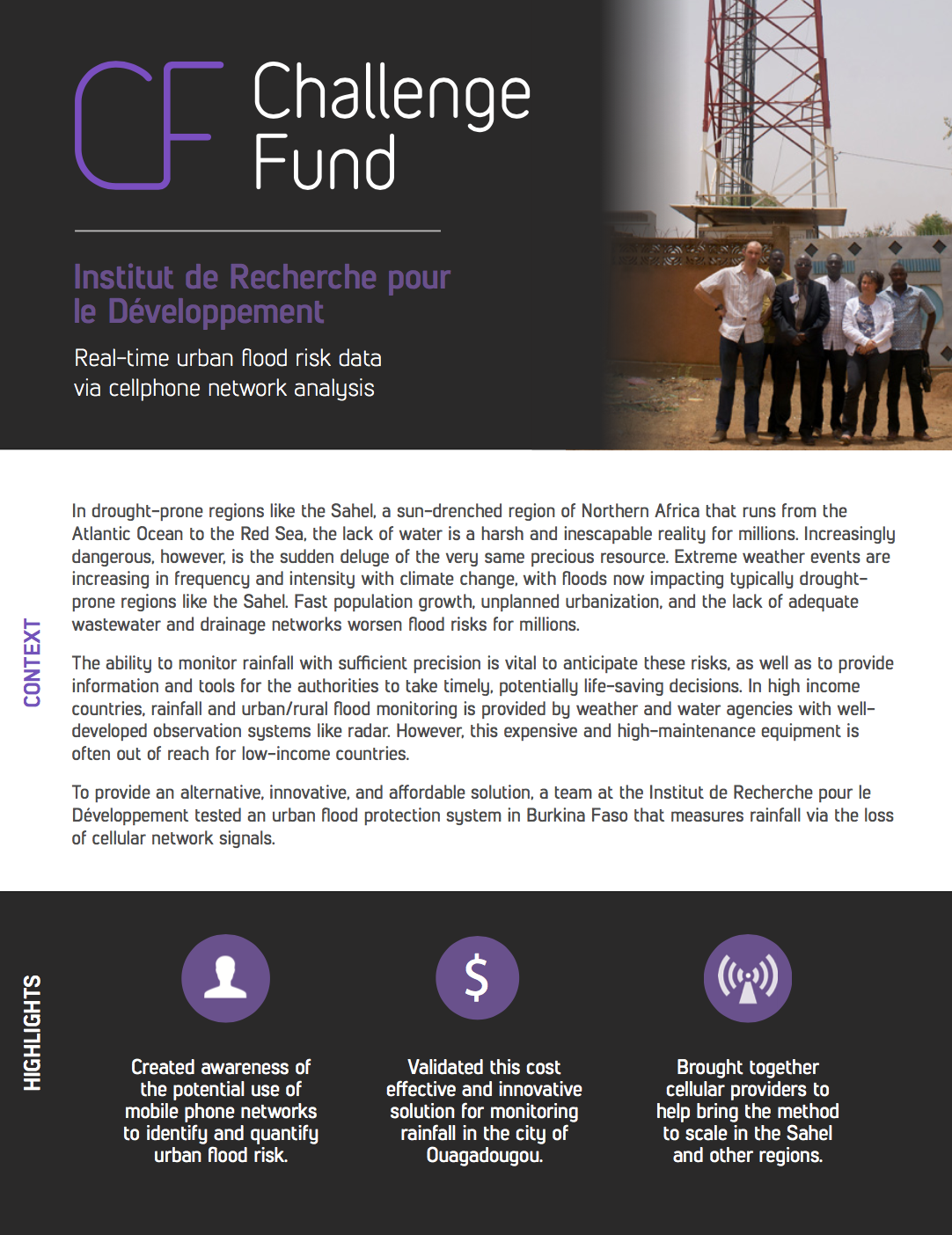In drought-prone regions like the Sahel, a sun-drenched region of Northern Africa that runs from the Atlantic Ocean to the Red Sea, the lack of water is a harsh and inescapable reality for millions. Increasingly dangerous, however, is the sudden deluge of the very same precious resource. Extreme weather events are increasing in frequency and intensity with climate change, with floods now impacting typically drought-prone regions like the Sahel. Fast population growth, unplanned urbanization, and the lack of adequate wastewater and drainage networks worsen flood risks for millions.
The ability to monitor rainfall with sufficient precision is vital to anticipate these risks, as well as to provide information and tools for the authorities to take timely, potentially life-saving decisions. In high income countries, rainfall and urban/rural flood monitoring is provided by weather and water agencies with well-developed observation systems like radar. However, this expensive and high-maintenance equipment is often out of reach for low-income countries.
To provide an alternative, innovative, and a ordable solution, a team at the Institut de Recherche pour le Développement tested an urban flood protection system in Burkina Faso that measures rainfall via the loss of cellular network signals.

